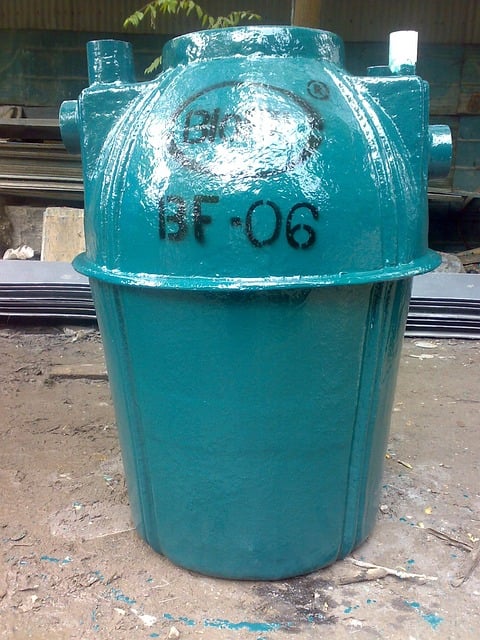Maintaining a septic system is vital for its longevity and environmental impact. This off-grid waste management solution consists of a septic tank and leach field. Key maintenance practices include regular inspections, tank pumping every 3-5 years, proper disposal of clogging materials, and limiting water usage. Preventive measures like using low-flow fixtures and avoiding non-biodegradable substances ensure optimal performance and reduce costly repairs, contributing to both efficient operation and environmental sustainability.
“Maintaining your septic system is crucial for ensuring its longevity and optimal performance. This comprehensive guide offers a detailed septic system maintenance checklist, covering everything from understanding the key components and their functionality to regular tasks that prevent costly issues. Learn how to recognize signs of trouble early on and implement preventive tips to keep your system running smoothly. By following these steps, you’ll contribute to the sustainable operation of your septic system.”
- Understanding Your Septic System: Components and Functionality
- Regular Maintenance Tasks for Optimal Performance
- When to Call in the Experts: Signs of Trouble and Prevention Tips
Understanding Your Septic System: Components and Functionality

Understanding your septic system is crucial for effective maintenance. This off-grid waste management solution consists of several key components that work together to treat and dispose of wastewater safely. At its core, a septic system includes a septic tank, where organic matter decomposes through bacterial action, and a leach field or drain field that allows treated water to soak into the soil. The tank’s primary function is to separate solid waste from liquid, while beneficial bacteria break down solids into nutrients that can be absorbed by plants. Regular maintenance involves scheduling professional inspections, pumping the septic tank at recommended intervals (typically every 3-5 years), and ensuring proper disposal of materials that can clog or damage the system.
Properly caring for your septic system is essential to ensure its longevity and optimal performance. Preventive measures such as avoiding excessive water usage, installing low-flow fixtures, and not disposing of non-biodegradable substances like wipes or plastics help keep the system running smoothly. Regular maintenance practices allow for early detection of potential issues, minimizing costly repairs and disruptions. By understanding your septic system’s inner workings and implementing these maintenance strategies, you contribute to its efficient operation and environmental sustainability.
Regular Maintenance Tasks for Optimal Performance

Regular maintenance is key to ensuring your septic system operates at peak efficiency and extends its lifespan. Here are some essential tasks to incorporate into your routine care:
1. Inspections: Schedule periodic inspections by professionals who can assess the overall health of your septic system. They’ll look for signs of damage, leaks, or blockages that could lead to more serious issues down the line. Early detection is crucial in preventing costly repairs and maintaining optimal performance.
2. Pumping: Regularly pumping the septic tank (typically every 3-5 years) removes solid waste buildup, preventing overflows and ensuring proper treatment. This process also allows for the examination of the tank’s condition and the disposal of sludge, which should be removed to maintain efficient bacteria activity.
3. Bacteria Balance: Maintain a healthy balance of beneficial bacteria in your septic system by using enzymes or additives designed to support their growth. These bacteria are essential for breaking down waste and preventing clogs. Following manufacturer instructions when introducing any additives is vital to avoid system imbalances.
4. Water Usage Management: Be mindful of your water consumption, as excessive use can strain the septic system. Implement water-saving practices at home, such as fixing leaks, using water-efficient appliances, and limiting prolonged showers. This reduces the overall volume of water entering the system, giving it time to naturally treat waste.
When to Call in the Experts: Signs of Trouble and Prevention Tips

Regular maintenance is key to keeping your septic system running smoothly, but there will be times when signs of trouble emerge, indicating it’s time to call in the experts. Red flags such as slow drains, unusual odours, or water backup around the drain field should not be ignored. These could be symptoms of a failing system, which can lead to serious environmental contamination if left unattended.
Prevention is always better than cure when it comes to septic systems. Regular inspections by professionals, ideally once a year, can help identify potential issues early on. Preventative measures include avoiding excessive water usage during dry periods, ensuring proper disposal of household hazardous waste, and not flushing non-biodegradable items down the toilet. By heeding these signs and following recommended maintenance practices, homeowners can extend the lifespan of their septic systems and avoid costly repairs or replacements.
Proper septic system maintenance is key to ensuring its longevity and optimal performance. By regularly performing the tasks outlined in this checklist, you can prevent costly repairs and keep your septic system running smoothly for years to come. Remember, early detection of issues through routine inspections and prompt action when signs of trouble arise are essential components of effective septic system care. With a little effort and attention, you’ll contribute to the sustainable operation of this vital component of your property’s infrastructure.
